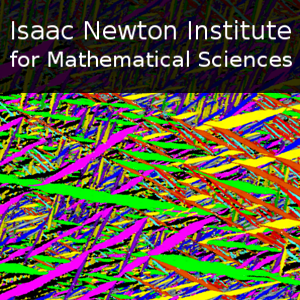Interfaces with singularities: understanding phase transitions in nematic liquid crystals
45 mins 59 secs,
669.44 MB,
MPEG-4 Video
640x360,
29.97 fps,
44100 Hz,
1.94 Mbits/sec
Share this media item:
Embed this media item:
Embed this media item:
About this item

| Description: |
Golovaty, D
Friday 18th January 2019 - 09:45 to 10:30 |
|---|
| Created: | 2019-01-18 16:22 |
|---|---|
| Collection: | The mathematical design of new materials |
| Publisher: | Isaac Newton Institute |
| Copyright: | Golovaty, D |
| Language: | eng (English) |
| Distribution: |
World
|
| Explicit content: | No |
| Aspect Ratio: | 16:9 |
| Screencast: | No |
| Bumper: | UCS Default |
| Trailer: | UCS Default |
| Abstract: | Experimental data indicates that the nematic-to-isotropic phase transition in liquid crystals may proceed via evolution of interfaces that are not smooth. In this talk, our goal is to provide a possible explanation for the observed singularities of the phase boundaries. In order to develop an initial understanding of transitions between the ordered and disordered states, we formulate a simple toy model based on the modified Ginzburg-Landau-type energy defined over vector fields on the plane. The corresponding variational model consists of anisotropic gradient terms and a potential that vanishes on two disconnected sets. The principal observation from the study of the simplified model is that the phase boundary singularities can be explained by large disparity between the elastic constants in the gradient contribution to the energy. In the talk we will present a combination of rigorous analysis and numerics that leads to this conclusion. This is a joint work with Michael Novack, Peter Sternberg, and Raghavendra Venkatraman.
|
|---|---|
Available Formats
| Format | Quality | Bitrate | Size | |||
|---|---|---|---|---|---|---|
| MPEG-4 Video * | 640x360 | 1.94 Mbits/sec | 669.44 MB | View | Download | |
| WebM | 640x360 | 483.82 kbits/sec | 163.01 MB | View | Download | |
| iPod Video | 480x270 | 522.12 kbits/sec | 175.85 MB | View | Download | |
| MP3 | 44100 Hz | 249.73 kbits/sec | 84.20 MB | Listen | Download | |
| Auto | (Allows browser to choose a format it supports) | |||||

